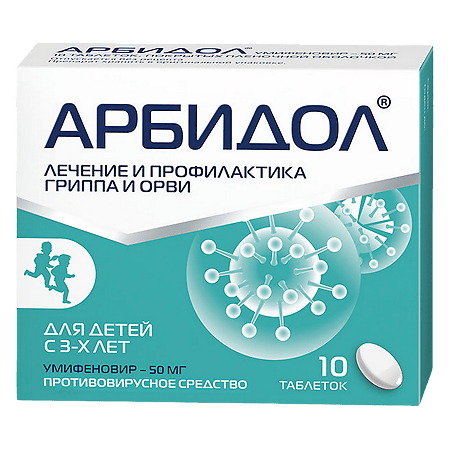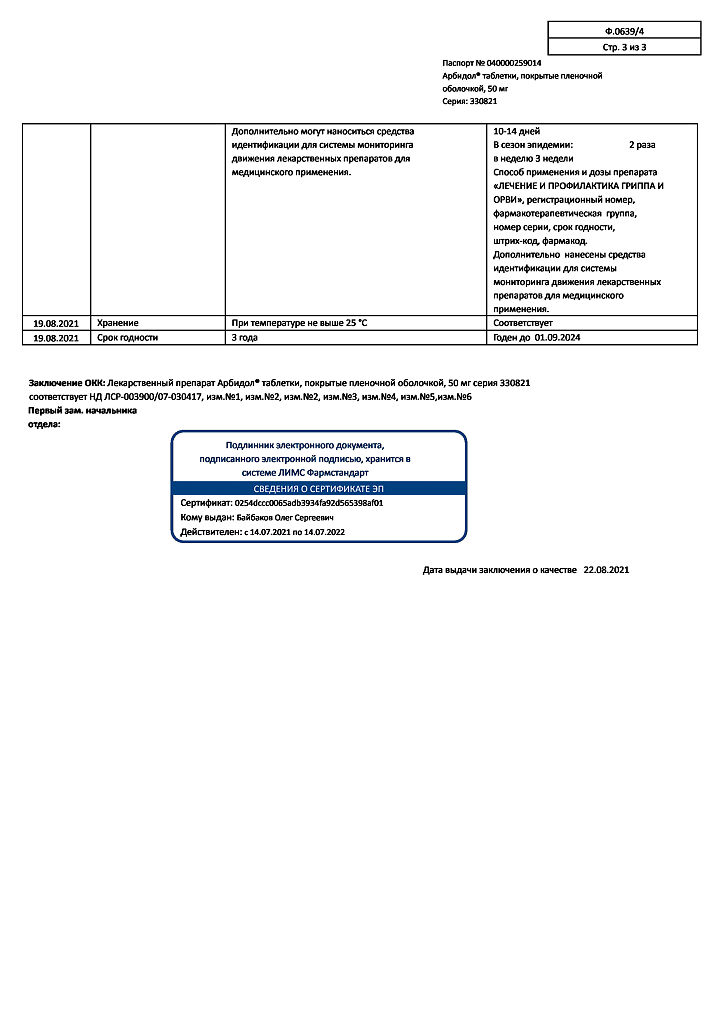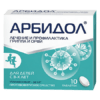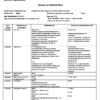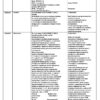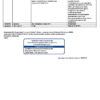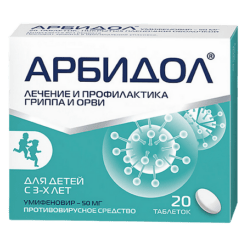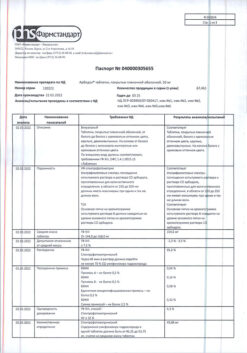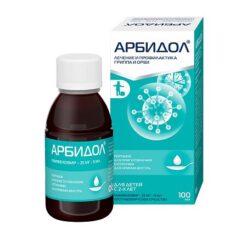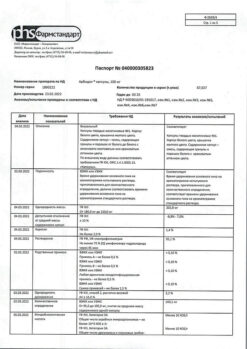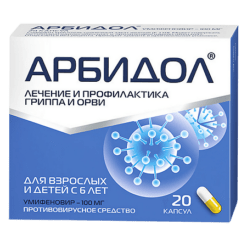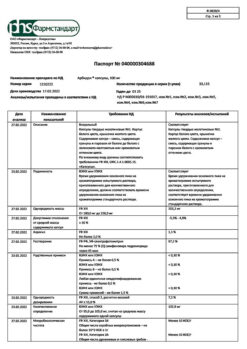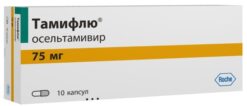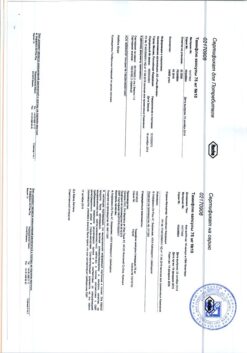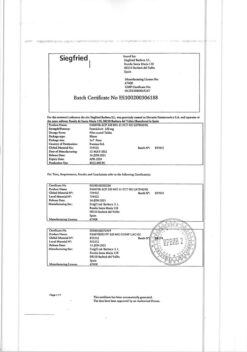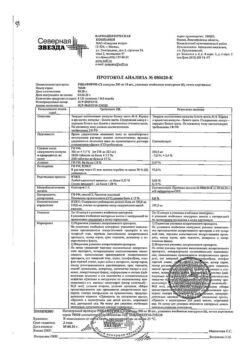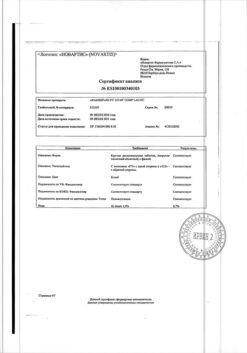No products in the cart.
Description
Pharmacotherapeutic group: antiviral drug.
ATX code: J05AX13
Pharmacological properties
Pharmacodynamics.
Antiviral agent. Specifically suppresses influenza viruses A and B (Influenzavirus A, B), including highly pathogenic subtypes A(H1N1)pdm09 and A(H5N1), as well as other viruses – causative agents of acute respiratory viral infections (ARI), associated with severe acute respiratory syndrome (SARS), rhinovirus (Rhinovirus), adenovirus (Adenovirus), respiratory syncytial virus (Pneumovirus), and parainfluenza virus (Paramyxovirus).
In terms of the mechanism of antiviral action it refers to fusion inhibitors (fusion), interacts with hemagglutinin of the virus and prevents fusion of the lipid shell of the virus and cell membranes. It has a moderate immunomodulatory effect, increases the body’s resistance to viral infections.
It has interferon-inducing activity – in studies on mice interferon induction was observed after 16 hours, and high titers of interferon were maintained in blood up to 48 hours after administration.
Stimulates cellular and humoral immune reactions: it increases number of lymphocytes in blood, in particular of T-cells (CD3), increases number of T-helpers (CD4) without affecting the level of T-suppressors (CD8), normalizes immunoregulatory index, stimulates phagocytic function of macrophages and increases number of natural killer (NK-cells).
Therapeutic effectiveness in viral infections is manifested in reduction of duration and severity of the course of the disease and its main symptoms as well as in the decrease of the rate of development of complications due to viral infection and exacerbations of chronic bacterial diseases.
In treatment of influenza or acute respiratory viral infections in adults the clinical trial showed that the effect of Arbidol® in adults is most pronounced in acute period of disease and shows shorter time of resolution of disease symptoms, less severe manifestations of disease and shorter time of virus elimination.
Therapy with Arbidol® results in higher rate of resolution of symptoms on the third day of therapy compared to placebo: 60 hours after the start of therapy the resolution of all symptoms of laboratory confirmed flu is more than 5 times higher than in the placebo group.
A significant effect of Arbidol® on the rate of elimination of the influenza virus was found, which, in particular, was manifested by a decrease in the frequency of detection of RNA of the virus on the 4th day.
It belongs to low-toxic drugs (LD50>4 g/kg). It does not have any negative effect on human body when administered orally in recommended doses.
Pharmacokinetics.
It is rapidly absorbed and distributed to organs and tissues. Maximal concentration in blood plasma is reached after 1.2 hours when administered in dose of 50 mg, in dose of 100 mg – after 1.5 hours. It is metabolized in the liver. The elimination half-life is 17-21 hours. About 40% is excreted unchanged, mainly in bile (38.9%) and in small amount in kidney (0.12%). During the first day 90% of the administered dose is eliminated.
Indications
Indications
Prevention and treatment in adults and children: influenza A and B, other acute respiratory viral infections.
Complex therapy of acute intestinal infections of rotavirus etiology in children over 3 years of age.
Complex therapy of chronic bronchitis, pneumonia and recurrent herpes infection.
Prevention of postoperative infectious complications.
Pharmacological effect
Pharmacological effect
Pharmacotherapeutic group: antiviral agent.
ATX code: J05AX13
Pharmacological properties
Pharmacodynamics.
Antiviral agent. Specifically suppresses in vitro influenza viruses A and B (Influenzavirus A, B), including highly pathogenic subtypes A(H1N1)pdm09 and A(H5N1), as well as other viruses – causative agents of acute respiratory viral infections (ARVI), associated with severe acute respiratory syndrome (SARS), rhinovirus (Rhinovirus), adenovirus (Adenovirus), respiratory syncytial virus (Pneumovirus) and parainfluenza virus (Paramyxovirus)).
According to the mechanism of antiviral action, it belongs to fusion inhibitors, interacts with the hemagglutinin of the virus and prevents the fusion of the lipid membrane of the virus and cell membranes. It has a moderate immunomodulatory effect and increases the body’s resistance to viral infections.
It has interferon-inducing activity – in a study on mice, the induction of interferons was noted after 16 hours, and high titers of interferons remained in the blood up to 48 hours after administration.
Stimulates cellular and humoral immune responses: increases the number of lymphocytes in the blood, especially T-cells (CD3), increases the number of T-helper cells (CD4) without affecting the level of T-suppressors (CD8), normalizes the immunoregulatory index, stimulates the phagocytic function of macrophages and increases the number of natural killer cells (NK cells).
Therapeutic effectiveness for viral infections is manifested in a decrease in the duration and severity of the disease and its main symptoms, as well as in a decrease in the incidence of complications associated with viral infection and exacerbations of chronic bacterial diseases.
In the treatment of influenza or ARVI in adult patients, a clinical study showed that the effect of the drug Arbidol® in adult patients is most pronounced in the acute period of the disease and is manifested by a reduction in the time for resolution of symptoms of the disease, a decrease in the severity of manifestations of the disease and a reduction in the time for elimination of the virus.
Therapy with Arbidol® leads to a higher frequency of relief of symptoms of the disease on the third day of therapy compared to placebo: 60 hours after the start of therapy, the resolution of all symptoms of laboratory-confirmed influenza is more than 5 times higher than the same indicator in the placebo group.
A significant effect of the drug Arbidol® on the rate of elimination of the influenza virus was established, which, in particular, was manifested by a decrease in the frequency of detection of viral RNA on the 4th day.
Refers to low-toxic drugs (LD50>4 g/kg). Does not have any negative effects on the human body when administered orally in recommended doses.
Pharmacokinetics.
Quickly absorbed and distributed throughout organs and tissues. The maximum concentration in blood plasma when taken at a dose of 50 mg is achieved after 1.2 hours, at a dose of 100 mg – after 1.5 hours. Metabolized in the liver. The half-life is 17–21 hours. About 40% is excreted unchanged, mainly with bile (38.9%) and in small amounts by the kidneys (0.12%). During the first day, 90% of the administered dose is eliminated.
Special instructions
Special instructions
It is necessary to follow the regimen and duration of taking the drug recommended in the instructions. If you miss taking one dose of the drug, the missed dose should be taken as early as possible and continue taking the drug according to the started regimen.
If, after using the drug Arbidol® for three days in the treatment of influenza and other acute respiratory viral infections, the severity of the symptoms of the disease, including high temperature (38 ° C or more), then you must consult a doctor to assess the validity of taking the drug.
Impact on the ability to drive vehicles and machinery
It does not exhibit central neurotropic activity and can be used in medical practice by people of various professions, incl. requiring increased attention and coordination of movements (transport drivers, operators, etc.).
Active ingredient
Active ingredient
Umifenovir
Composition
Composition
One tablet contains:
active ingredient:
umifenovir hydrochloride monohydrate – 51.75 mg (in terms of umifenovir hydrochloride – 50.00 mg);
excipients:
core: potato starch – 31.860 mg, microcrystalline cellulose – 57.926 mg, povidone (povidone K30) – 8.137 mg, calcium stearate – 0.535 mg, croscarmellose (croscarmellose sodium) – 1.542 mg;
shell: Opadry 10F280003 White
(Opadry 10F280003 White) – 6,000
mg, Hypromellose (hydroxypropyl methylcellulose 2910) – 3.54 mg, macrogol (polyethylene glycol) – 0.48 mg, polysorbate-80 (Tween-80) – 0.06 mg, titanium dioxide – 1.92
mg.
Pregnancy
Pregnancy
In animal studies, no harmful effects on pregnancy, embryonic and fetal development, labor or postnatal development were identified.
Use of the drug Arbidol®
Contraindicated in the first trimester of pregnancy.
In the second and third trimester of pregnancy, Arbidol® can only be used for the treatment and prevention of influenza and if the expected benefit to the mother outweighs the potential risk to the fetus. The benefit/risk ratio is determined by the attending physician.
It is unknown whether Arbidol® penetrates
into breast milk in women during lactation. If it is necessary to use the drug Arbidol®, you should stop breastfeeding.
Contraindications
Contraindications
Hypersensitivity to umifenovir or any component of the drug, children under 3 years of age. First trimester of pregnancy. Breast-feeding.
With caution
Second and third trimesters of pregnancy.
Side Effects
Side Effects
Arbidol® drug
It is a low-toxic drug and is usually well tolerated.
Side effects are rare, usually mild or moderate and transient.
The frequency of adverse drug reactions is determined in accordance with the WHO classification: very often (with a frequency of more than 1/10), often (with a frequency of at least 1/100, but less than 1/10), infrequently (with a frequency of at least 1/1000, but less than 1/100), rarely (with a frequency of at least 1/10000, but less than 1/1000), very rare (with a frequency of less than 1/10000), frequency unknown (cannot be determined from available data).
Immune system disorders: rarely – allergic reactions.
If any of the side effects indicated in the instructions get worse, or you notice any other side effects not listed in the instructions, tell your doctor.
Interaction
Interaction
When prescribed with other drugs, no negative effects were noted.
Special clinical studies devoted to the study of interactions of the drug Arbidol®
with other drugs have not been carried out.
Availability information
undesirable interaction with antipyretics, mucolytics and local vasoconstrictors
drugs were not used in clinical trials
identified.
Storage conditions
Storage conditions
In a dry place, protected from light, at a temperature not exceeding 25 °C
Shelf life
Shelf life
3 years.
Manufacturer
Manufacturer
Pharmstandard-Leksredstva, Russia
Additional information
| Shelf life | 3 years. |
|---|---|
| Conditions of storage | In a dry, light-protected place at a temperature not exceeding 25 °C |
| Manufacturer | Pharmstandard-Leksredstva, Russia |
| Medication form | pills |
| Brand | Pharmstandard-Leksredstva |
Other forms…
Related products
Buy Arbidol, 50 mg 10 pcs with delivery to USA, UK, Europe and over 120 other countries.

